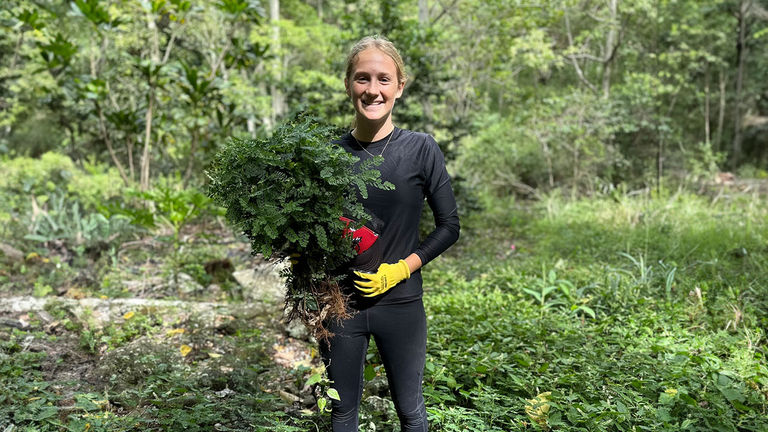Auntie Puanani Lindsey handed me a highlighter-green noni fruit and encouraged me to take a bite.
“Tastes kind of like a green apple,” she said with a smile.
There were six of us standing in the shifting shade of the noni tree, while a warm breeze blew through the leafy green forest of West Maui’s Honokowai Valley.
No bigger than a fist, the lumpy little noni fruit did taste like a sour green apple. Puanani told us that Hawaiians used the fruit for a variety of ailments, including relief from insect bites and jellyfish stings. She also mentioned one of the noni’s drawbacks:
“When it gets really ripe it smells pretty strong — sort of like Limburger cheese,” she said with a chuckle.
Our group of visitors and residents met Puanani just a couple of hours earlier in a parking lot off West Maui’s Honoapiilani Highway — about a 10-minute drive from Kaanapali Beach Resort. Lindsey is co-founder of nonprofit conservation group Maui Cultural Lands; she meets volunteers in this lot on Saturday mornings, then drives them in her truck to Honokowai Valley, where she directs workers to remove invasive plants that grow over the lava stone foundations of a centuries-old Hawaiian village.
“She just loves to work,” Puanani’s son Ekolu told me. “And at 80 years old, that’s what’s keeping her young.”
Ekolu Lindsey, now the president of Maui Cultural Lands, took over the nonprofit’s leadership responsibilities after his father’s passing in 2009.
My dad always thought ‘aloha’ – if shared with the world — would create a better world. Not just for today, but for tomorrow.
“My dad always thought ‘aloha’ – if shared with the world — would create a better world,” Ekolu said. “Not just for today, but for tomorrow. That was his vision.”
Since 2002, Maui Cultural Lands’ volunteers have cleared more than 10 acres of Honokowai Valley, uncovering ancient home sites and village temples while also planting thousands of native trees. Ekolu said help from the many visiting vacationers who have volunteered alongside residents over the years has been greatly appreciated.
“Anybody who wants to give back to Maui in any form — those are the ones I want,” Ekolu said. “Expect to have fun. Come in with an open mind, and be ready to get a little bit dirty, sweaty and itchy. It’s definitely a work project.”
 Volunteers of all ages are welcome, so long as they're willing to work and get a bit dirty and sweaty.
Volunteers of all ages are welcome, so long as they're willing to work and get a bit dirty and sweaty.
Credit: 2024 Maui Cultural LandsWhat to Expect While Volunteering
Ekolu noted that travelers hoping to lend a hand to the West Maui community after the devastating Lahaina fires are welcome.
“I think most people coming to Maui — especially now — want to do something,” he explained. “You can come out and work with us, and we’ll give you that feel-good [energy]. And we really appreciate it.”
Volunteers should wear close-toed shoes, long-sleeved shirts and pants, and bring sunscreen, mosquito repellent, water and lunch. Gloves and necessary tools are provided, and kids willing to work can join. (The nonprofit regularly hosts school groups.)
You can come out and work with us, and we’ll give you that feel-good [energy]. And we really appreciate it.
Our little troop worked for a couple hours one morning earlier this spring, removing invasive plants growing over a stretch of ancient Hawaiian rock wall. Pulling the weeds alongside Maui residents, and having the chance to “talk story” with them, was certainly a trip highlight. And Puanani also guided us through some of the ancient village before lunch, introducing native plants — including noni — and explaining their significance in Hawaiian culture and medicine.
“Aside from being careful and staying hydrated, the goals are to have fun and learn at least one thing,” Ekolu said. “I also think it’s important that people come up as quickly as possible before they enjoy the rest of their visit. I hear this a lot: ‘I wish I’d come earlier in my trip.’ So that way, they understand more about Maui and our people sooner.”